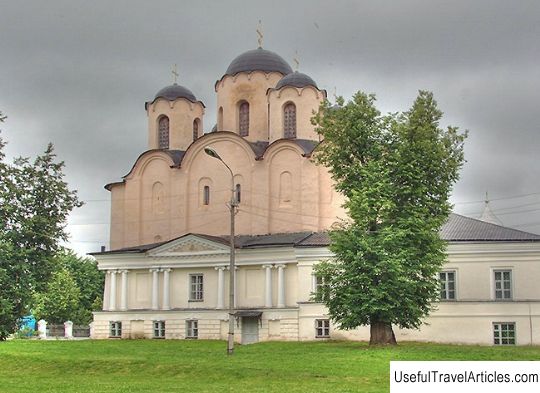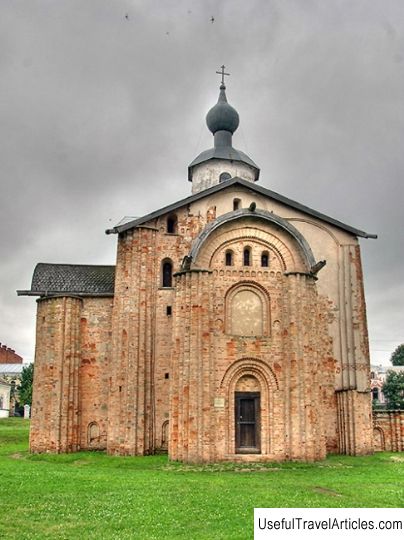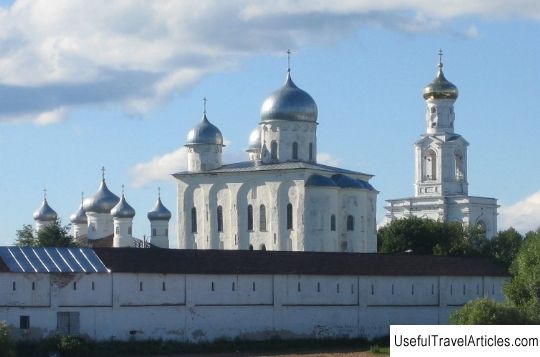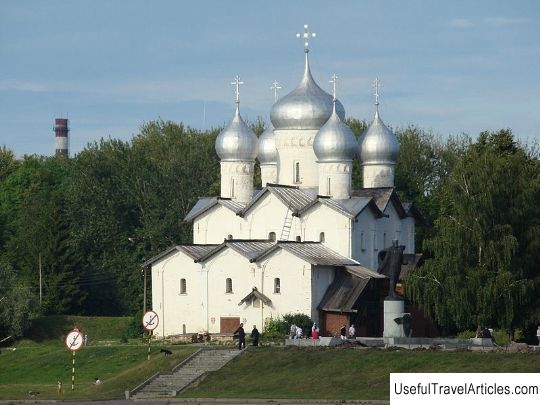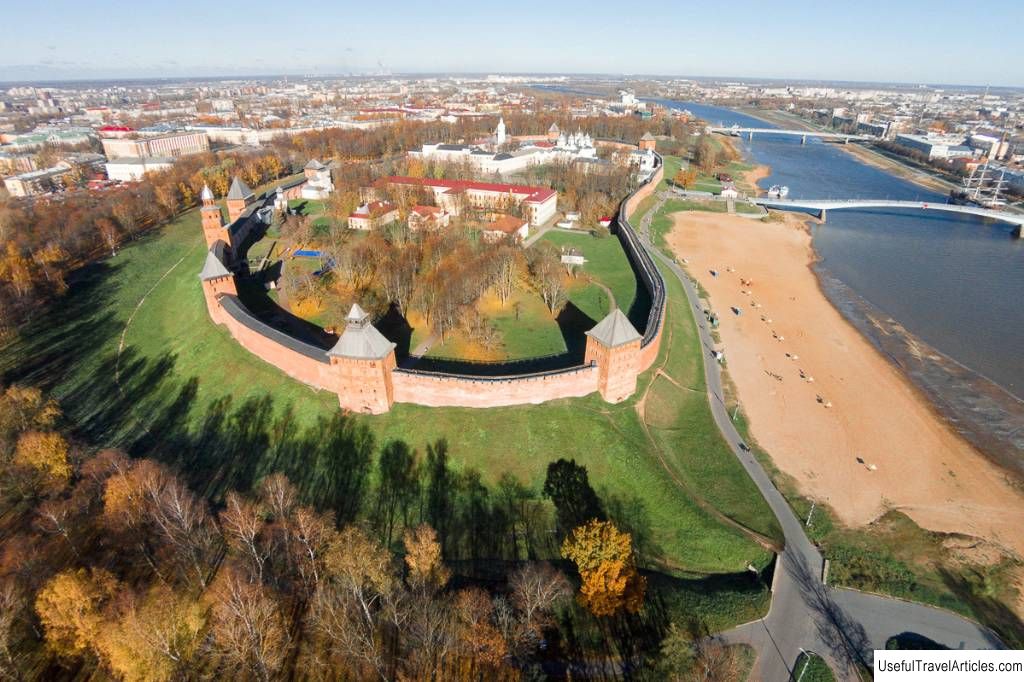Saint Sophia Cathedral description and photos - Russia - North-West: Veliky Novgorod
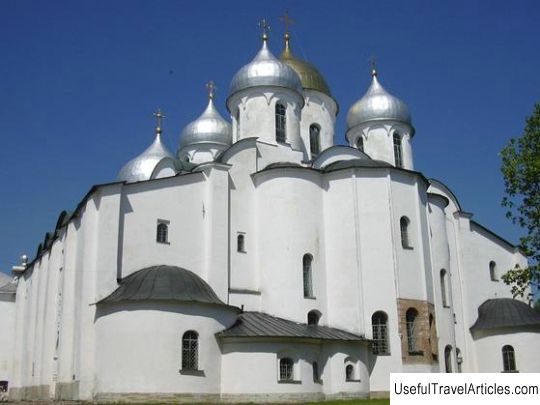
Saint Sophia Cathedral description and photos - Russia - North-West: Veliky Novgorod. Detailed information about the attraction. Description, photos and a map showing the nearest significant objects. Photo and descriptionSt. Sophia Cathedral of Novgorod is a famous monument of ancient Russian architecture. The significance of this cathedral in the life of ancient Novgorod was great. The independence of Novgorod Sophia was the symbolism of the free city of Novgorod. In 1045, the laying of the temple of Sophia of the Wisdom of God takes place, where Yaroslav the Wise, who arrived from Kiev to Novgorod with the princess, is present. The cathedral was built until 1050. It was consecrated by Bishop Luke, while data from different chronicles indicate that this event happened in 1050 - 1052. The temple is crowned with five domes, which in ancient times were covered with lead sheets. The central dome was covered with gilded copper in the 15th century. Poppies are made in the form of ancient Russian helmets. The walls were not whitewashed except for the apses and drums, and are covered with a black stone (natural paint). The walls are not painted inside, the vaults are covered with frescoes. The design was influenced by the architecture of Constantinople. Wall marble was combined with mosaic ornaments of vaults. Later, in 1151, marble replaced limestone and mosaics replaced frescoes. The cathedral was first painted in 1109. From the frescoes of the Middle Ages there are fragments in the central dome and the painting in the Martyrievskaya porch "Constantine and Helena". There is a version that this image could become the basis of the mosaic, since the frescoes were made with rather diluted paints. The fresco of the main dome "Pantokrator" was destroyed during the war. The main painting dates back to the 19th century. In the southern gallery, the burials of prominent Novgorodians are known - bishops, princes, mayors. You can enter the temple through the Northern doors. During the service of the archbishop, the main - Western gates are opened. The western portal contains a bronze gate made in the Romanesque style, with many sculptures and high reliefs. They were made in Magdeburg in the XII century, and in the same century they came to Novgorod from Sweden as a trophy of war. With the construction of the temple, Novgorodians were imbued with a special attitude to it. “Where Sofia is, there is Novgorod,” the residents said. This idea was developed in the 15th century, when the central dome of the five-domed dome was gilded, and a lead dove was placed on its cross, symbolizing the Holy Spirit. The legend says that Ivan the Terrible in 1570 treated the Novgorodians cruelly. At this time, a dove sat on Sophia's cross. He was petrified with horror when he saw a terrible battle from a height. After the Mother of God revealed to one monk that God had sent a dove to comfort the city, and until the dove flies down from the cross - with help from above, protects the city. In ancient times, the cathedral had an altar barrier. It included images that have come down to us: "Apostles Peter and Paul" and "Savior on the throne" of the 11th-12th centuries. A high iconostasis was installed in the cathedral in the XIV-XVI centuries. The silvery reflections of the frames, the colorful brightness of the icons of the Rozhdestvensky and Uspensky iconostases attract the eye, raising it to the heights of the dome and vaults. The architectural structure of the Novgorod Sophia Cathedral is perfect. The Kiev and Byzantine architects who erected it conveyed through the main building in the 11th century the essence of the character of the city of Novgorod: the grandeur of church thought and its spiritual power. St. Sophia of Novgorod differs from its predecessor - the cathedral in Kiev - by the severity of forms and compactness of volumes. The cathedral is 27 m long and 24.8 m wide; with galleries 34.5 m long, 39.3 m wide. The total height from the ancient floor to the central cross of the head is 38 m. The 1.2 m thick walls are made of limestone of different colors. The stones are not hewn and are fastened with a solution of lime with admixtures of crushed bricks. The arches, their lintels and vaults are lined with bricks. The cathedral keeps the 1170 icon of the Mother of God "The Sign". The icon defended Novgorod from the attack of the Suzdal prince Andrey. For Novgorodians, this event was very significant, even a celebration was established by a special order. In 1929, the cathedral was closed and a museum was opened in it. It contains the treasures of the sacristy. During the occupation, the temple was plundered and damaged. After the war, it was restored and made a department of the Novgorod Museum. In 1991 the cathedral was transferred to the Russian Orthodox Church. Patriarch Alexy II consecrated it on August 16, 1991.        We also recommend reading Kos Archaeological Museum description and photos - Greece: Kos Topic: Saint Sophia Cathedral description and photos - Russia - North-West: Veliky Novgorod. |
